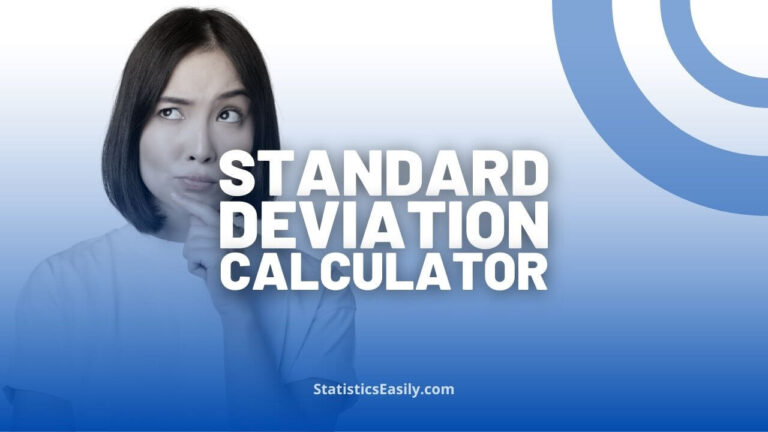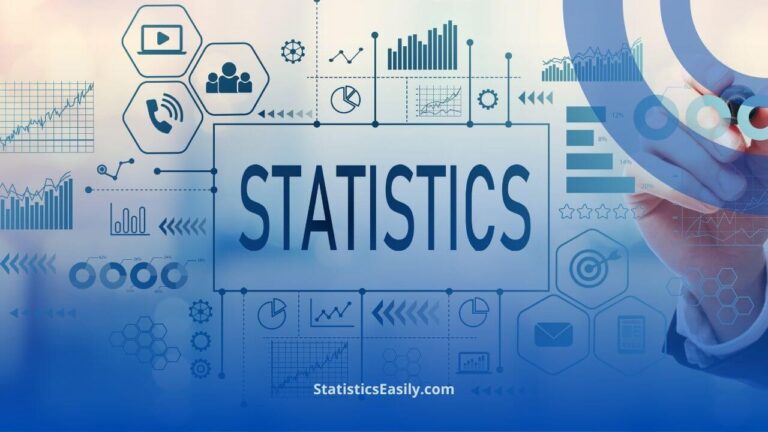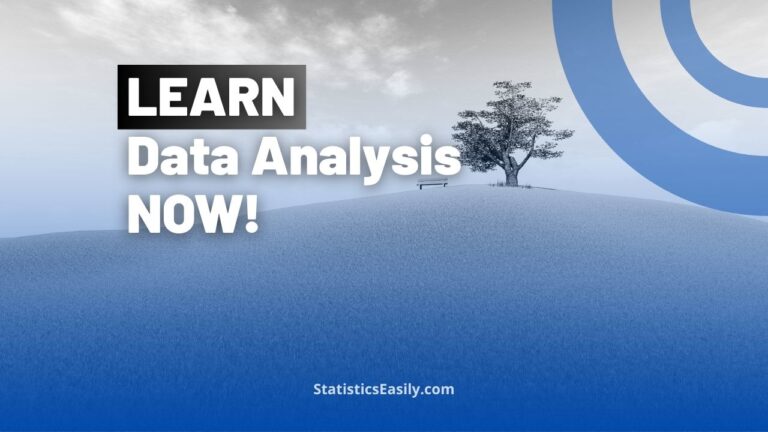Understanding Overconfidence in Statistics: Quantifying Uncertainty Accurately
You will learn how to identify and mitigate overconfidence in statistical estimations to improve the accuracy of your data analysis.
Introduction
Overconfidence is a common psychological bias that affects our judgment and decision-making processes. In statistics and data analysis, this bias can lead to significant errors, particularly when it comes to quantifying uncertainty. A landmark study by Russo and Schoemaker (1989) demonstrated that people often overestimate their ability to make accurate predictions, resulting in overly narrow confidence intervals that fail to encompass the true values.
This article delves into the concept of overconfidence in statistics, exploring its implications and providing practical strategies to improve the accuracy of your estimations. By understanding and addressing overconfidence, you can enhance the reliability of your data analyses and make more informed decisions.
Highlights
- Overconfidence often leads to overly narrow confidence intervals in statistical predictions.
- Russo and Schoemaker’s study revealed that 99% of participants were overconfident.
- Accurate quantification of uncertainty is crucial for reliable data analysis.
- Statistical methods can help mitigate the impact of overconfidence.
- Broadening confidence intervals can improve the accuracy of predictions.
Ad Title
Ad description. Lorem ipsum dolor sit amet, consectetur adipiscing elit.
The Russo and Schoemaker Study
In their seminal study, Russo and Schoemaker (1989) assessed overconfidence by asking participants to answer various factual questions with a range they believed had a 90% chance of containing the correct answer. The goal was not to find precise answers but to gauge the participants’ ability to quantify uncertainty accurately.
Participants were presented with questions such as:
- Martin Luther King Jr.’s age at death
- Length of the Nile River, in miles or kilometers
- Number of countries in OPEC
- Number of books in the Old Testament
- Diameter of the moon, in miles or kilometers
- Weight of an empty Boeing 747, in pounds or kilograms
- Year Mozart was born
- Gestation period of an Asian elephant, in days
- Distance from London to Tokyo, in miles or kilometers
- Deepest known point in the ocean, in miles or kilometers
They were instructed to provide a range for each question they believed had a 90% chance of containing the correct answer. For example, if a participant had no idea about Martin Luther King Jr.’s age at his death, they might answer with a range of 0 to 120 years old, which they could be 100% sure includes the true answer. However, participants were encouraged to narrow their responses to a range they were 90% sure contained the correct answer.
The results were striking: 99% of the participants displayed overconfidence. They created ranges that should have contained the correct answers 90% of the time. Still, these ranges included only 30% to 60% of the correct answers. This significant discrepancy highlights the pervasive nature of overconfidence and its potential impact on statistical analyses.
Implications of Overconfidence in Data Analysis
Overconfidence in statistical estimations can have serious consequences, particularly in fields that rely heavily on accurate data interpretation. For example, in medical research, overconfident estimations can lead to incorrect conclusions about the efficacy of treatments, potentially putting patients at risk. In business, overconfidence can result in flawed market predictions, leading to poor strategic decisions.
Medical Research: Accurate data analysis is crucial for determining the effectiveness and safety of treatments in medical research. Overconfidence can lead researchers to underestimate the uncertainty of their findings, resulting in overly optimistic conclusions. This can cause ineffective or harmful treatments to be recommended, ultimately endangering patients’ lives. Researchers can provide more reliable and valid results by recognizing and mitigating overconfidence and enhancing patient safety and treatment efficacy.
Business and Finance: Overconfidence can lead to misguided investments and strategic decisions in the business and finance sectors. For instance, an overconfident market analyst might predict stock prices with unwarranted precision, leading to investment decisions that fail to account for the inherent uncertainty in market behavior. This can result in significant financial losses. Acknowledging the limits of one’s predictive capabilities and adopting a more cautious approach can help mitigate these risks and improve decision-making.
Environmental Science: Environmental science also suffers from the effects of overconfidence. Predictive models for climate change, natural disasters, and resource management often involve high uncertainty. Overconfident predictions can lead to inadequate preparation for natural disasters, improper resource allocation, and ineffective policy measures. By providing more realistic ranges of outcomes and emphasizing the uncertainty in their predictions, scientists can better inform policymakers and the public, leading to more effective environmental management and disaster preparedness.
Strategies for Quantifying Uncertainty
Given the significant impact of overconfidence, it is essential to adopt strategies that enhance the accuracy of your estimations. Here are several approaches to help you quantify uncertainty more effectively:
Broadening Confidence Intervals
One practical approach is to broaden your confidence intervals. While this may seem counterintuitive, it helps ensure that your ranges are more likely to encompass the true values, thereby improving the reliability of your predictions. Instead of aiming for overly precise ranges, consider expanding your confidence intervals to increase the likelihood of capturing the actual values. This approach can help counteract the tendency to underestimate uncertainty.
Utilizing Statistical Methods
Employ statistical techniques such as bootstrapping and Bayesian inference to quantify uncertainty better. These methods provide more robust estimates by incorporating variability and prior information into your analyses.
- Bootstrapping: This method involves repeatedly resampling your data with replacement to create multiple simulated samples. By analyzing these samples, you can estimate the variability and uncertainty in your data, leading to more accurate confidence intervals.
- Bayesian Inference: This approach incorporates prior knowledge or beliefs into the analysis, updating them with new data to produce a posterior distribution. Bayesian methods can provide more realistic uncertainty estimates, mainly when dealing with limited data or complex models.
Educating Yourself and Others
Understanding the psychological underpinnings of overconfidence and its impact on decision-making can help you recognize and address this bias in your work. Educating your team about these concepts can also promote more accurate estimations. Awareness of overconfidence and its consequences can foster a culture of caution and critical thinking, leading to better decision-making and more reliable data analysis.
Regularly Reviewing and Adjusting Estimates
Periodically review your past estimations and compare them with actual outcomes. This practice can help you identify patterns of overconfidence and adjust your future estimations accordingly. By analyzing your past predictions and their accuracy, you can learn from your mistakes and improve your ability to quantify uncertainty.
Seeking Peer Review
Collaborating with colleagues and seeking feedback on your estimations can provide valuable insights and help you identify potential biases in your work. Peer review can offer a fresh perspective and highlight areas where you may have underestimated uncertainty. Engaging with others in your field can also foster a more rigorous and critical approach to data analysis.
Case Studies: Real-World Examples of Overconfidence
To illustrate the impact of overconfidence in various fields, let’s explore some real-world case studies.
Case Study 1: The Challenger Disaster
The Space Shuttle Challenger disaster in 1986 is a tragic example of overconfidence in engineering and risk assessment. Engineers and decision-makers at NASA were overconfident in their safety assessments, underestimating the risks associated with the O-ring seals in cold temperatures. This overconfidence led to the catastrophic failure of the shuttle, resulting in the loss of seven astronauts’ lives. A more cautious approach, acknowledging the uncertainty and potential risks, could have prevented this disaster.
Case Study 2: The 2008 Financial Crisis
The 2008 financial crisis was partly fueled by overconfidence in the housing market’s stability and the reliability of complex financial instruments like mortgage-backed securities. Financial analysts and institutions underestimated the risks and overestimated their ability to predict market behavior. This overconfidence led to massive financial losses and a global economic downturn. Acknowledging the uncertainty and incorporating more realistic risk assessments could have mitigated the crisis’s impact.
Case Study 3: Predicting Election Outcomes
Overconfidence in predicting election outcomes is another common issue. Pollsters and analysts often present their predictions with high confidence, only to be surprised by unexpected results. The 2016 US presidential election is a notable example, where many analysts were overconfident in predicting Hillary Clinton’s victory. Analysts could provide a more accurate and realistic picture of potential outcomes by broadening their confidence intervals and emphasizing the uncertainty in their predictions.
Ad Title
Ad description. Lorem ipsum dolor sit amet, consectetur adipiscing elit.
Conclusion
Overconfidence is a prevalent bias that can significantly impact the accuracy of statistical analyses. By understanding this bias and adopting strategies to quantify uncertainty more accurately, you can enhance the reliability of your data-driven decisions. Remember, the goal is not to eliminate uncertainty but to acknowledge and account for it effectively.
Accurate quantification of uncertainty is crucial for reliable data analysis and informed decision-making. Whether conducting medical research, making business decisions, or developing environmental policies, recognizing and addressing overconfidence can help you achieve more accurate and reliable results.
Frequently Asked Questions (FAQs)
Overconfidence in statistics refers to the tendency to overestimate the accuracy of one’s predictions, often leading to overly narrow confidence intervals.
Overconfidence can result in unreliable data interpretations, potentially leading to incorrect conclusions and poor decision-making.
Compare your past confidence intervals with actual outcomes to see if they frequently fail to encompass the exact values, indicating overconfidence.
Broadening confidence intervals, using statistical methods, educating yourself about biases, reviewing past estimates, and seeking peer review can help reduce overconfidence.
Their study found that 99% of participants were overconfident, creating confidence intervals that included only 30% to 60% of the correct answers.
Bootstrapping and Bayesian inference provide more accurate estimates by incorporating variability and prior information.
Broader confidence intervals are more likely to capture the actual values, improving the reliability of predictions.
Understanding the psychological basis of overconfidence can help individuals recognize and mitigate this bias in their work.
Feedback from colleagues can provide new perspectives and identify potential biases, leading to more accurate estimations.
The goal is to make more informed and reliable data-driven decisions by acknowledging and effectively accounting for uncertainty.








